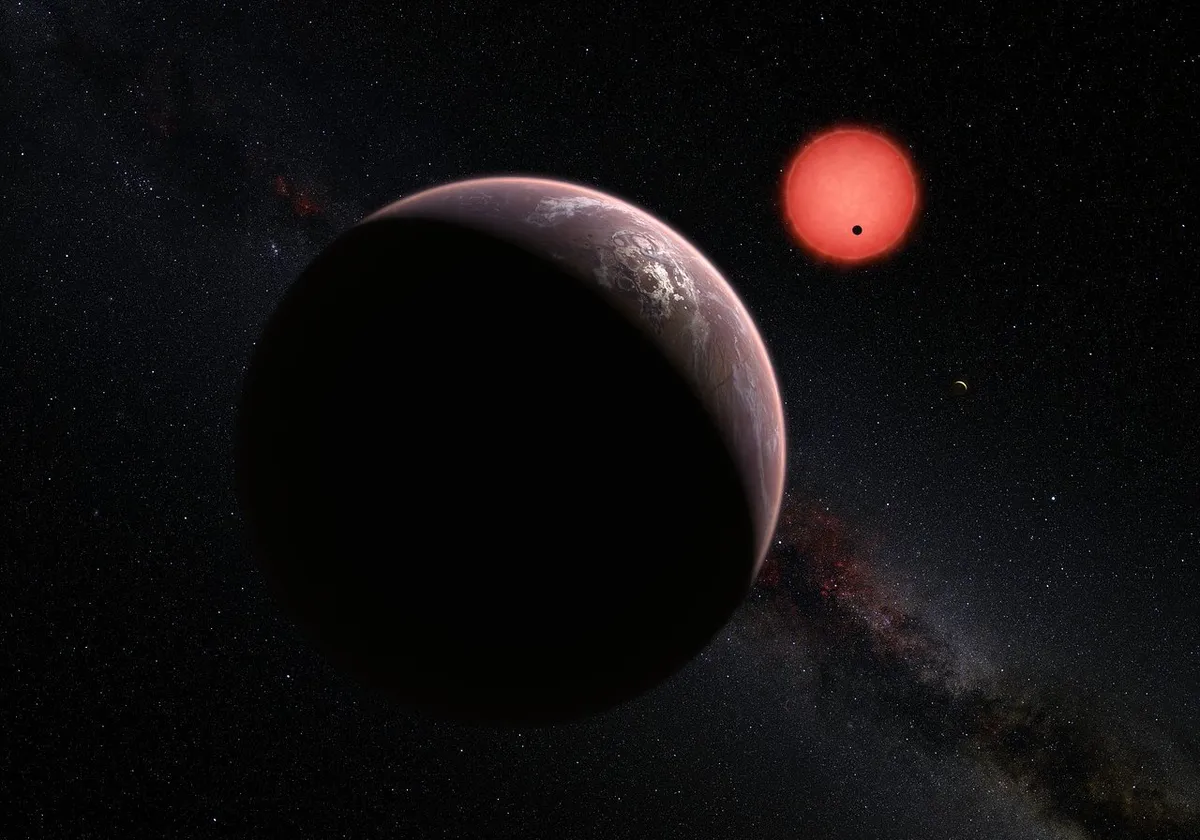M-class red dwarfs are the most common kind of star in the Milky Way, totalling around 75 per cent of all stars in our neighbourhood. Planets orbiting them probably represent one of the biggest categories of real estate for supporting extraterrestrial life.
But these planets face one major problem for harbouring life: to receive enough warming to be habitable around such dim stars, an exoplanet would need to be very close to the heat of its host star.
Read more from Professor Lewis Dartnell:
- The search for a second Earth
- The true nature of our ambiguous ally
- Could water-rich exoplanets experience extreme cooling?
This proximity to their stars also means that such red dwarf worlds spin down to become tidally locked so that one side is always facing their sun.
Their days are as long as their years and they have one face that experiences everlasting day and a far side in eternal night.
Assuming such a tidally locked world has a thick enough atmosphere to redistribute the stellar heat from the near side to the far, it could remain habitable. But what chances for an ecosystem on the dark side?
Most surface life on Earth is directly or indirectly supported by photosynthesis – organisms like plants or cyanobacteria growing by capturing the energy of sunlight.
Could photosynthesis also power life on the night side of an M-dwarf exoplanet if it has a large enough moon to act as an orbiting reflector?
Could a dark-side ecosystem be supported by moonlight?
These questions have been raised by researchers Manasvi Lingam and Abraham Loeb at Harvard University.
Lingam and Loeb have calculated how bright the full moon would be under different exoplanet–exomoon scenarios, and therefore whether the flux of light would be enough to support photosynthesis.
Assuming the albedo (reflectivity) of the exomoon is similar to our Moon, they worked out that photosynthesis is possible if the exomoon is larger than about one-tenth the size of Earth.
This is a promising result for known exoplanets orbiting red dwarfs, such as Proxima b or the habitable planets around TRAPPIST-1.

But there’s another problem, say Lingam and Loeb.
The very tidal forces from the star’s gravity that create a locked exoplanet also act to destabilise the orbit of any satellites.
Exoplanets orbiting in the habitable zone of red dwarf stars are unlikely to have retained any large moons.
So those exoplanets most susceptible to becoming tidally locked, and so needing the reflected light from a moon to support photosynthesis on the permanent-night side, are also the category of habitable planets most likely to have any large moons stripped away from them.
Lingam and Loeb also considered the reverse situation: can photosynthesis be supported during night time on an Earth-sized exomoon orbiting a gas giant exoplanet by the sunlight reflected from the planet?
In this case – not unlike the world imagined in the sci-fi film Avatar – the prospects actually seem much better.
Their calculations revealed that there are situations where an Earth-sized exomoon can enjoy a habitable climate while also receiving enough reflected light from its gas giant host to power photosynthesis.
This article originally appeared in the October 2019 issue of BBC Sky at Night Magazine. Prof Lewis Dartnell is an astrobiologist at the University of Westminster. He was reading Photosynthesis on Exoplanets and Exomoons from Reflected Light by Manasvi Lingam and Abraham Loeb. Read it online at here.

